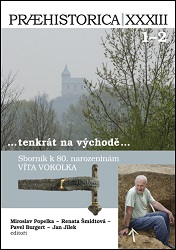Ke struktuře epišňůrového osídlení v Hulíně a jeho okolí
To the Structure of Epi-corded Settlement at Hulín and its Surrounding
Author(s): Jaroslav PeškaSubject(s): Archaeology, Social history, Social development
Published by: Univerzita Karlova v Praze, Nakladatelství Karolinum
Keywords: Central and Eastern Moravia; Nitra Culture; settlement strategy and structure; settlement and burial sites;
Summary/Abstract: Large rescue archaeological excavations in central and eastern Moravia have been yielding evidence of complete source materials of the Epi-corded Carpathian Cultural Complex (ECCC). In the Hulín region, the ECCC settlement reached remarkable density (one site per one km2), having been situated at a topographically convenient location in the flood plain of the left-bank Morava river. The settlement structure had two forms in the sense of alternating settlement and burial sites in no great distances from one another. The model seems to be that of small central settlements surrounded (within 500 m) by smaller satellite inhumation (family?) necropolises, and, within a visible distance, large, occasionally even long-term (gathering sites for a certain area) burial sites with individual small settlements (homesteads?). This concept could be completed with larger settlements which lacked remains of ground plans of above-ground structures; yet, no corresponding necropolises have been discovered. The causes and reasons for such a change in the settlement strategy, taking into consideration the significant level of unification of the ECCC society, needs to be found, yet.
Journal: Praehistorica
- Issue Year: 33/2017
- Issue No: 1-2
- Page Range: 313-334
- Page Count: 22
- Language: Czech

